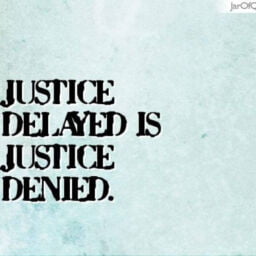INTRODUCTION
The road system is perhaps the most valuable of all national investments because it promotes wealth creation by connecting urban centres as well as the localities they pass through. Economic growth can expand as a result of this connectedness, enabling underprivileged areas to catch up and accomplish sustainable and equitable growth. Other parts of the economy, such as steel, cement, automobiles, and estate development, benefit from road building.[1]India has the second substantial pavement network on Earth, with an aggregate length of 5.89 million km. This transit system transports 64.5 % of all production in The state, as well as 90 % of all ridership. With increased accessibility among towns, municipalities, and villages around the nation, the transportation system has continuously increased significantly. The sale of autos and the transportation of goods by roadways in India are rapidly increasing.[2]Since the periods of Chandragupta Maurya and Ashoka, India has had a long history of building roadways. Sher Shah Suri built a road between Peshawar and Kolkata during the Mughal dynasty, and this was when substantial progress was made. Grand Trunk(G.T.)The road is now the name of the road. The Mughal routes are followed by the majority of India’s current trunk routes.[3]
LEGISLATIONS AND POLICIES
THE NATIONAL HIGHWAYS ACT, 1956:
The National Highways Act of 1956 (“NH Act”) outlines the legal framework for the Central Government to acquire land for the building of national highways. The NH Act is a full code in and of itself for land acquisition, compensation, and dispute resolution. Compensation (and its payment) to landowners is decided by the Competent Authority notified by the Central Government once the land is purchased under the NH Act. The Act gives the power to declare certain highways to be national highways, power to acquire land, power to enter for a survey, etc. are clearly stated.[4]
THE CENTRAL ROAD WAY AND CONNECTIVITY SECURITY ACT, 2000:
The Central street finance (afterwards CRF) is degenerate finance set up according to Section 6 of the Central pavement Fund Act, 2000, to construct and improve National Highways, State Roads (particularly those of noteworthy financial consequence and giving metropolitan association), country foundation, rail under/over spans, and another transportation framework. However, the government renamed the CRF the Central Road and Infrastructure Fund, 2000 in 2018 so that more construction activities might be funded by the budget Unlike the CRF, the CRIF officially reports to the National treasury, thanks to the 1961 Government of India (Business Allocation) Rules.[5]
MOTOR VEHICLES ACT, 1989 & 2019:
In 1988, the Indian Parliament enacted the Motorised Vehicles Act, which regulates almost all aspects of road vehicles. It contains requirements for traffic laws, vehicle insurance, motor vehicle registration, permit control, and fines. On July 1, 1989, the Act entered into effect. The Motor Vehicles (Amendment) Bill was created by the Indian government in collaboration with state transport ministers to make changes to the Motor Vehicles Act, 1988, to make roads safer. The Motor Vehicles(Amendment)Bill of 2017 was issued by the lower house on the 10th of April, 2017. The Motor Vehicles (Amendment) Bill, 2019, proposes a critical expansion in different punishments for petty criminal offences, just as insurance for Rescuers, review of deficient vehicle parts via car organizations, considering developers answerable for helpless foundation quality, and expecting vehicle proprietors criminally to take responsibility for infringement perpetrated by adolescent drivers.
The new act made certain amendments, some of them are:
1) It makes Aadhaar a need for obtaining a driver’s license and registering a vehicle.
2) In quick in and out circumstances, the public authority would pay the casualty’s family a remuneration of Rs 2 lakh or more. Right now, the total is just Rs 25,000.
3) on the account of childish activity offences, the protector of the vehicle would be held responsible unless it may appear that the offence was managed without their insight or that they endeavoured to forestall it.
4) The base fine for driving affected by liquor has been raised from Rs 2,000 to Rs 10,000.
The new act is a more vigorous form of the old act, legislated with the sole aim of reducing fatalities, drunken driving, juveniles riding vehicles, etc., with increased fines. So, that it may prevent from committing wrongs.[6]
BHARATMALA PARIYOJANA SCHEME
Any nation`s development is reliant upon its transportation organizations and how well they are kept up with. The same may be said regarding India’s development as a large and populous country. The development of new and developed roads is important for connecting the places and maintaining a smooth flow of traffic. With the execution of the Bharatmala project, the same will be fulfilled. A large number of new streets will be constructed around the country as a feature of the arrangement. Bharatmala Pariyojana is a new highways umbrella program aimed at improving cargo and traveller development efficiency across the nation by spanning critical infrastructural gaps with effective interventions such as the development of Economic Corridors, associate hallways and Feeder paths, National passage Quality Enhancement, Border and worldwide network Roads, Coastal and harbour network Roads, furthermore Green-field freeways. The PM’s goal was to launch a pan-national scheme to upgrade the road network. The country’s Road Transport and Highways Ministry will be in charge of all major parts of the plan.
Key highlights of the project
- The development of Multimodal coordination Parks and the decrease of gag focuses would make strides in the proficiency of ebb and flow corridors.
- Improve association in the North East by utilizing collaborations with inland conduits. For Project Preparation and Asset Monitoring, there is a strong emphasis on the use of technology and scientific planning.
- Delegation of authority to speed up project delivery – Phase I is expected to be completed by 2022. In the North East, improving connection is a priority.[7]
CONCLUSION
Framework’s worth has been perceived since it benefits both in the financial and social movement. Be that as it may, while the presence of framework doesn’t ensure advancement, its avoidance smothers financial advancement and social action. This thought can be upheld by a straightforward model: how might a nation move finished and crude wares starting with one area then onto the next assuming it needed a satisfactory transportation framework? Without a particularly developed travel system, the exchange could happen. How might people go to emergency clinics, schools, and universities on the off chance that there were no helpful portability frameworks set up? Clinics, schools, and universities, in addition to other things, are not found locally. Framework, as per this hypothesis, is an impetus that assists with expanding both monetary and social action.[8] As a result, the hole can be loaded up with a careful comprehension of the laws and their legitimate execution. As previously stated, we have the infrastructure to satisfy our requirements and complete our tasks, but we must use it wisely. In all cases, the infrastructure, particularly near signals, is unable to meet the demands. In that situation, we’ll need to devise a new system that eliminates any obstacles for medical emergency travellers, such as ambulances. In conclusion, we will be able to use the road infrastructure safely and efficiently, reducing the number of fatalities.
Author(s) Name: Guntupalli Srilatha (Dr. B.R. Ambedkar College of Law, Andhra University)
References:
[1] Deepak Sood, ‘India’s road network can pave the path to rapid economic recovery in coming years’ (Financial Express, 23 October 2021 ) <https://www.financialexpress.com> accessed 11 January 2022
[2] ‘Road Infrastructure in India’ (India Brand Equity Foundation ) <https://www.ibef.org/industry/roads-india.aspx> accessed 11 january 2022
[3] ‘What Is The Importance Of Road Networks In India?’ (Shareyouressays) <https://www.shareyouressays.com> accessed 11 January 2022
[4] Mehul Parti & Ashwini Malhotra, (mondaq, 24 April 2020) <https://www.mondaq.com> accessed 11 january 2022
[5] ‘All you need to know about the Central Road and Infrastructure Fund Act, 2000’ (leaders, 10 December 2020) <https://blog.ipleaders.in/need-know-central-roadinfrastructure-fund-act-2000/ > accessed 11 January 2022
[6]‘What is motor vehicles act’ (Business Standard) <https://www.businessstandard.com/about/what-is-motor-vehicles-act > accessed 11 January 2022
[7] ‘Bharatmala Pariyojana’,(india.gov.in ) <https://www.india.gov.in/spotlight/bharatmalapariyojana-stepping-stone-towards-new-india> accessed 11 january 2022
[8] Gajurel A,’ Performance-Based Contracts for Road Projects’ (Springer Link, 27 June 2013 ) <https://doi.org/10.1007/978-81-322-1302-4_6 > accessed 11 January 2022















